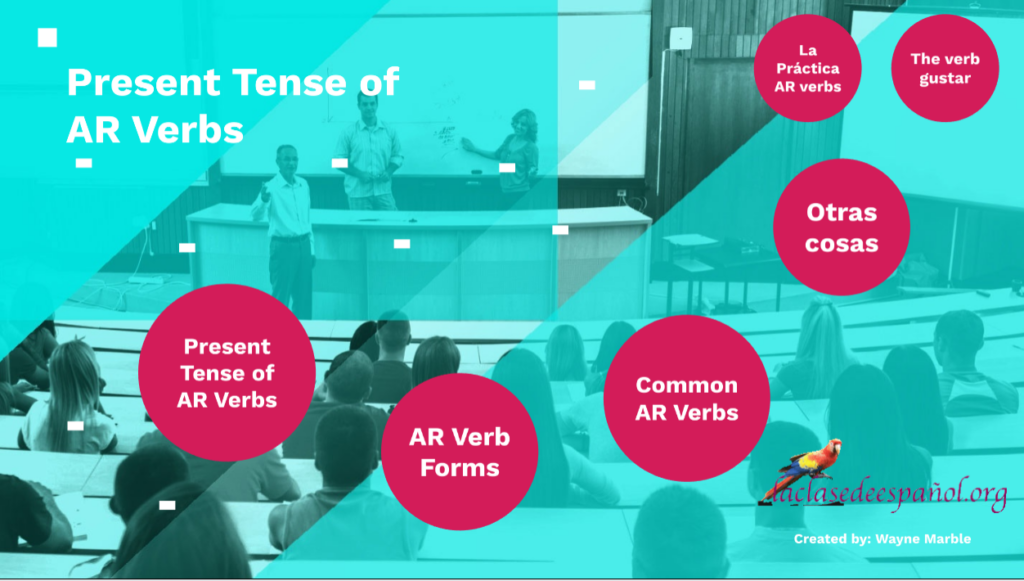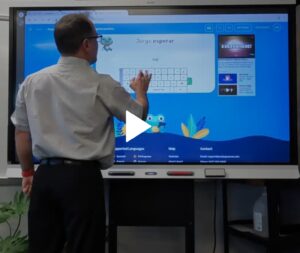
Module 2.2 - ar VERBS
Overview
In this module, students will learn several AR ending verbs and how to use them to determine who is being referred to or what the subject is.
Completing this course will help you:
- Learn new vocabulary (AR verbs)
- Learn how to conjugate the verbs according to the subject of the sentence.
Learning Path
This is a list of very common AR verbs that will be important for this unit.
Click here for a link to practice your AR ending verbs with Quizlet.

Click on the picture above the learning path to open the slides. These slides will explain how to correctly conjugate (use) verbs that end in AR correctly in the present tense. There will be a practice activity at the end that you will need to turn in on Schoology.
Look at this conversation between Juan and Linda. The verb to use for each one is given in parenthesis. You will need to change the verb correctly according to the subject. Turn your answers in on Schoology.
- JUAN ¡Hola, Linda! ¿Qué tal las clases?
- LINDA Bien. (tomar) tres clases… química, biología y computación. Y tú, ¿cuántas clases (tomar)?
- JUAN (tomar) tres también… biología, arte y literatura. El doctor Cárdenas (enseñar) la clase de biología.
- LINDA ¿Ah, sí? Lily, Alberto y yo (tomar) biología a las diez con la profesora Garza.
- JUAN. ¿(estudiar) mucho ustedes?
- LINDA Sí, porque hay muchos exámenes. Alberto y yo (necesitar) estudiar dos horas todos los días (every day).
Put the sentences together as done in the model. You only need to write one sentence for each one. If the subject pronoun is in parenthesis such as the (yo) is in the model, then you have the option of including it or not including it in your sentence. The subject pronouns that are not in parenthesis must be included in your sentence.
Modelo
(yo) / viajar / Madrid / mañana
Viajo a Madrid mañana. or Yo viajo a Madrid mañana.
ustedes / practicar / vocabulario
¿preparar (tú) / tarea?
clase de español / terminar / once
¿qué / buscar / ustedes?
(nosotros) buscar / pluma
(yo) comprar / calculadora
In this activity you will be creating an interactive folder explaining about AR Verbs and how to use them correctly in the present tense.
In person students: Watch the video below as I explain what you need to do.
Online Students: In your weekly email, you will receive instructions on how to complete this project using Canva.
Review the las part of the Prezi Slide Presentations where I explain about the verb gustar. It is an AR verb, however it operates differently from other regular AR verbs. Make sure that you have reviewed this in the presentation before attempting this assignment.
For each question, read what these people do. Then use the information in parentheses to tell what they like (me gusta, te gusta, etc.). Follow the model below as an example.
Modelo:
Yo enseño en la universidad. (las clases)
Me gustan las clases.
Tú deseas mirar cuadros (paintings) de Picasso. (el arte)
Soy estudiante de economía. (estudiar)
Tú estudias italiano y español. (las lenguas extranjeras)
No descansas los sábados. (cantar y bailar)
Busco una computadora. (la computación)







